SPECIAL REPORT: Wildlife in Westchester – Man vs. Beast?
News Based on facts, either observed and verified directly by the reporter, or reported and verified from knowledgeable sources.
As wild animals in Westchester become more abundant — and increasingly bold — we humans have a choice: adapt or bite back. We don’t recommend the latter.

Good morning! Today is Monday, October 18, and you are reading today’s section of Examiner+, a digital newsmagazine serving Westchester, Putnam, and the surrounding Hudson Valley.
Need to subscribe — or upgrade your Examiner+ subscription to enjoy full access to all of our premium digital content? Details here.
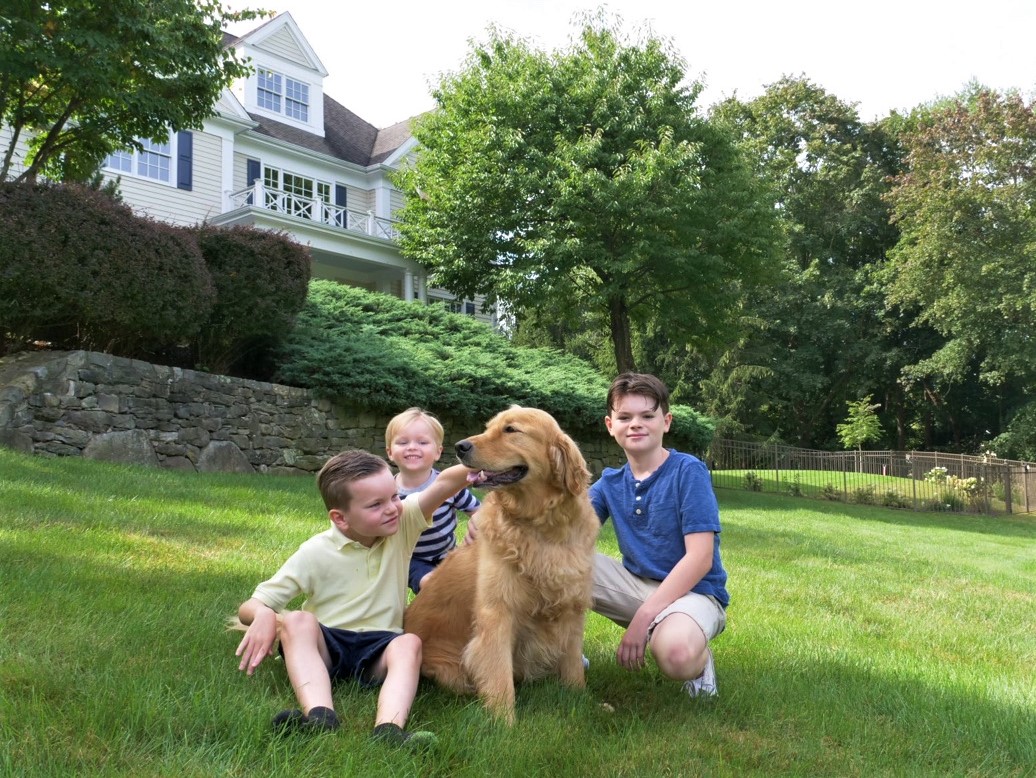
Katherin Crossling’s three sons play with Lucky on their front lawn in the Town of Ossining, where the golden retriever confronted a black bear that was passing through. (Photo: David Tuttman)
On August 9, at about 6:30 in the evening, Katherin Crossling was sitting on the porch of her home on the Ossining/Yorktown border. It’s part of an eight-house development bordering the Teatown Nature Preserve. Route 134 is close enough that car-struck deer sometimes drag themselves to her property before passing away.
A lawyer, Crossling was working while her three young sons and husband were inside, her golden retriever Lucky at her feet. Suddenly, Lucky bolted into the yard, barking intensely. The Crosslings get lots of wildlife on their bucolic property, and she assumed he was barking at a rabbit, “since it was the bunny time of day.” She peered over a bank of bushes, and much to her shock saw Lucky and a “huge” black bear on the lawn below, standing on their hind legs, teeth bared, ferociously swiping at each other.
“It looked like a big black couch was fighting with my dog,” she recalls. “I screamed bloody murder!”
Eastern black bears are not inherently aggressive; they’re focused on storing fat for the winter, and toward that end prefer to burn as few calories as possible. Faced with a shrieking human and an antagonistic dog, the bear withdrew from the fight, turned, and lumbered away, disappearing into the pine trees along Route 134, but not before Crossling’s neighbor’s Nest doorbell captured video of it passing her front gate.
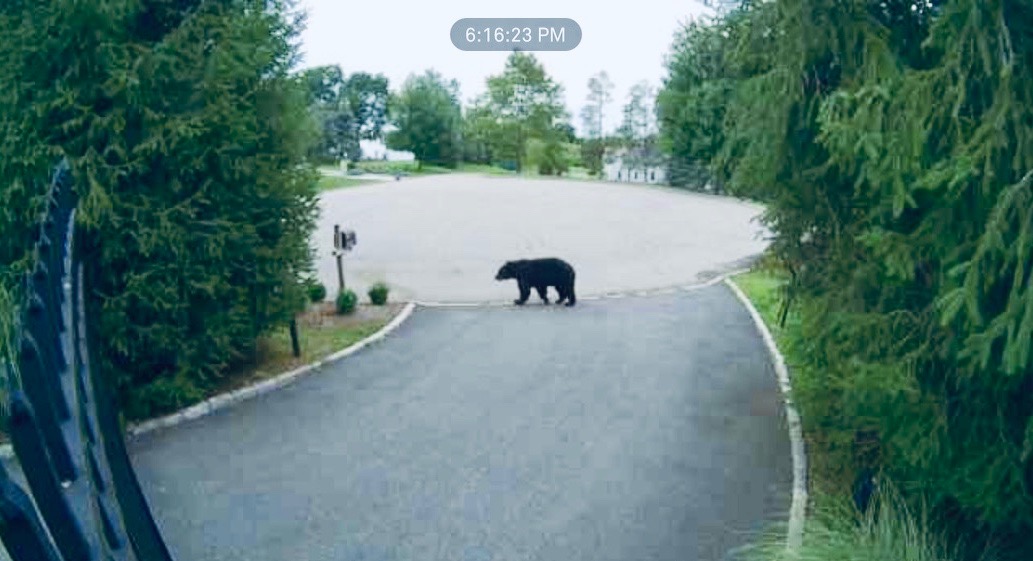
A neighbor’s doorbell cam captured the bear strolling by a few minutes earlier. (Photo courtesy Maeck Fowler)
Lucky returned to the porch, “as pleased as can be,” Crossling recalls. “I was shaking from head to toe. I’d never seen anything like it.”
After the initial shock wore off, Crossling was philosophical. “The bear was passing through and Lucky happened to see it…. We’ll make peace with it. These creatures lived here before we ever did.”
Sharing Space
While suburbanites are surrounded by local fauna, few of them feel threatening. They’re “nuisance” animals. The groundhog that tunnels your perfect lawn. The squirrels that nest in your attic. The skunk that sprays your dog. Like early-morning leaf blowers, their antics are part of the discordant background noise of our otherwise comfortable suburban lives.
But if it seems you’re seeing more big animals lately, you’re right: Their numbers are growing. According to the New York State Department of Environmental Conservation (NYSDEC), white-tailed deer are at “historically unprecedented levels.” New York State has up to 8,000 bears, and bobcats are increasingly common. A moose showed up in Bedford in 2016. Last August, a security cam video caught a black bear roaming through downtown Peekskill. The NYSDEC confirms that bear sightings in Westchester County are up, “and this trend is expected to continue.” Only the number of coyotes has remained stable.
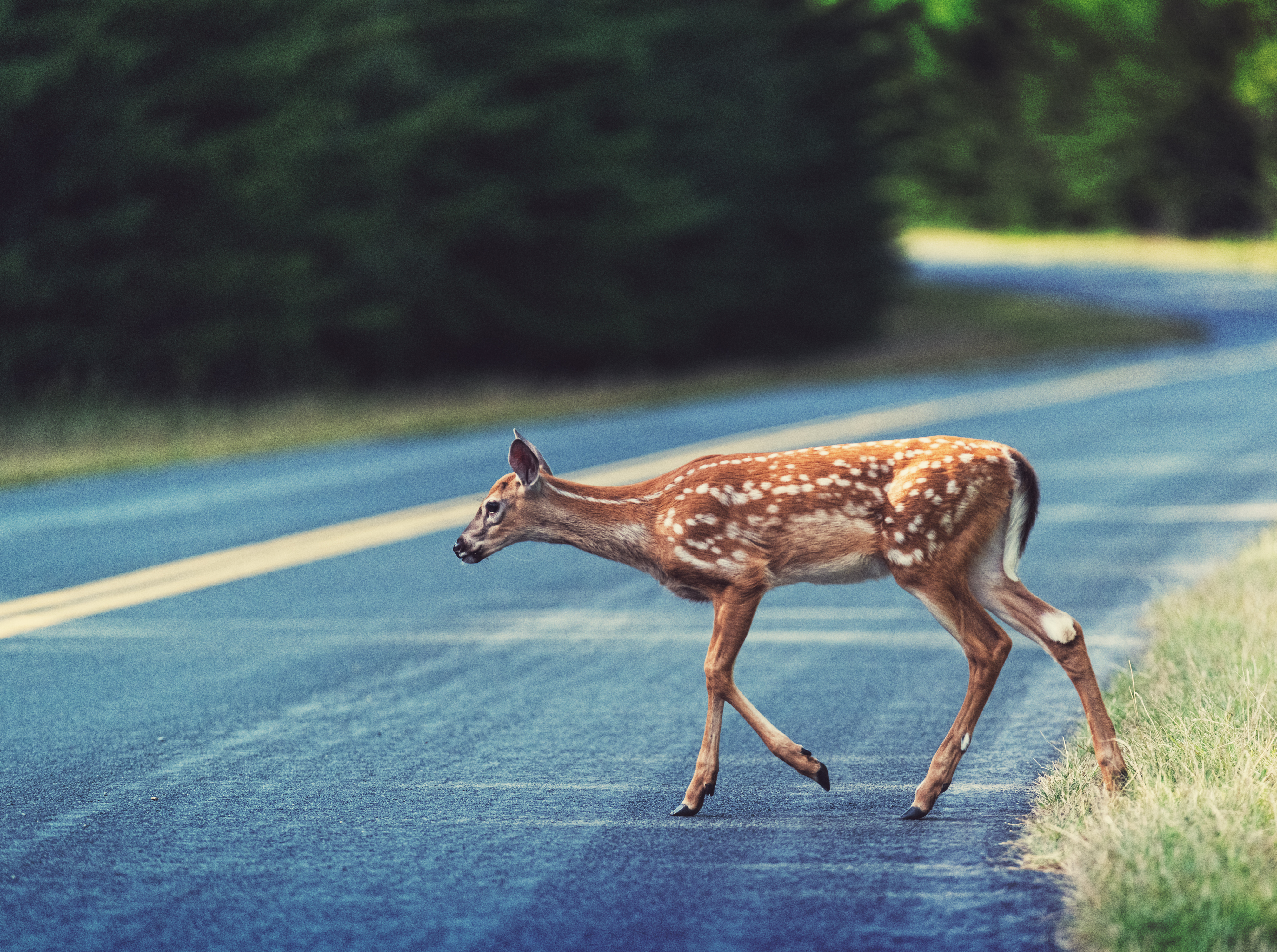
Ample food and a lack of predators make the suburbs ideal breeding grounds for wildlife, especially deer, says Budd Veverka, Director of Wildlife Management at the Mianus River Gorge in Bedford. “Suburban bears have more cubs than rural bears,” he says. Think of these creatures as college roommates: Give them space to reduce conflict. But if those 20 acres of woods outside town get cut down for houses and strip malls, these animals become more concentrated.
Watch Budd Veverka’s talk, “Bears in Your Backyard.”
“We live in their habitat,” says Veverka. “If we reduce that habitat through development, it shrinks the area the animals are in, and conflict can occur.”
Meet the Neighbors!
Ironically, this proliferation of mammals is a success story. Many were decimated by early hunting practices, their forest habitats cut down for timber. Conservationists have turned the tide, reintroducing nearly extinct species into the wild and protecting forested lands. It’s worked—maybe too well. Westchester County is part of the most densely populated woodlands corridor in the nation. In his 2012 book, Nature Wars: The Incredible Story of How Wildlife Comebacks Turned Backyards into Battlegrounds, journalist Jim Sterba writes that “It is very likely that more people live in closer proximity to more wild animals and birds in the eastern United States today than anywhere on the planet at any time in history.”
You don’t need to explain that to one family in Putnam Valley, who stepped outside one morning in late September only to be greeted by a bobcat making its way through their backyard:
Not only are there more animals, Sterba posits, but humans are less equipped to coexist with them. Sequestered in our climate-controlled homes, glued to screens, unhitched from our agrarian roots—Sterba calls us “denatured”—we don’t understand the animals in our own backyards, and suspicion and fear fill the vacuum. While the Discovery Channel entertains us with meerkats and sharks, we’re leaving the lids off our garbage cans, brimming with delicious pizza crusts and half-gnawed chicken wings. We’re practically inviting our wild neighbors to Come on over for a bite! We got compost! Even an outdoor grill bearing the residue of your last burger night can be an “attractant,” luring a hungry critter onto your back deck and into your life.
Chappaqua resident Victoria Alzapiedi is a onetime civil rights lawyer, former co-chair of the New Castle Conservation Board, and an advocate for peaceful coexistence between man and beast. As people flee the cities for the suburbs, she worries house-hunters in the semi-rural suburbs aren’t told about the biodiversity in their own backyards and react by calling trappers and laying poison.
“Ideally, when people from the city are shopping for a place to live, their realtor would say, ‘Don’t just come here for the schools. Come here for the beautiful, thriving ecosystem!’”
Patrick Moore agrees. As president of Animal Nation, a Rye-based animal rehabilitation center, he gets 8,000 calls a year about wildlife that’s injured or annoying or just plain scary, and those calls have gone up during the pandemic.
“We got so many people moving out of the city. A lot of phone calls are like: ‘There’s a hawk and my daughter’s worried about it going after her children.’ When was the last time you heard about a hawk eating a child? We got a call from someone who was swimming in their pool at dusk, and there were a lot of bats flying around. They wanted the bats removed. Well, you’d better go live in a bubble.”
Afternoon of the Fawn
Joyce M. doesn’t mind sharing her Ossining village bubble with wild things, even if it means sacrificing her flowers. The children’s book writer grew up on a farm upstate and is “not afraid of anything—including snakes and spiders.” In Ossining as elsewhere, white-tailed deer have become graceful presences in the background, grazing along the river banks and denuding gardens. “One day I have hostas and hydrangeas,” she shrugs, “and the next day I don’t.”
On Memorial Day of this year, a young neighbor knocked on Joyce’s door to excitedly inform her that her family had a new pet: a baby deer. “Immediately I was very concerned. I said, ‘Take me to see the baby deer right now.’ It was a three-week-old fawn, wearing a pink dog collar and a pink leash, and they were leading it around like a puppy. My heart shattered.”
Joyce discovered that her neighbors had found the fawn curled up along the Croton Aqueduct trail, all alone. “They thought it was abandoned. They thought they were doing right by grabbing the baby, but they had no idea.” Joyce knew the fawn was by itself because mother deer leave their young to look for food. “That’s why they have dappling; to blend into the forest floor.” She noticed that her neighbors were feeding the fawn cow’s milk out of a baby bottle. “Cow’s milk can kill a young fawn in a matter of days. I learned that from my brother, a vet tech.”
Joyce rushed home to her computer and Googled “wildlife rescuer in Westchester.” She found Patrick Moore’s name at Animal Nation and called him. He told Joyce, “‘We’ve got to get that fawn. It’s not going to survive in their care.’” She spent the next few hours, with Moore’s help, trying to convince her neighbors to give up the fawn. He told them that it’s illegal to take a wild animal, which comes with a hefty fine. The NYSDEC calls it “kidnapping,” and it’s pretty common, with fawns, baby cottontail rabbits, and baby birds being the most often taken.
She pleaded with her neighbors, “Wild animals are not pets. This baby is going to die in your care; do you want that to happen? Because I certainly don’t.” Reluctantly the family agreed to hand over their new pet, and Animal Nation sent a rescuer to pick up the fawn.
Joyce’s story is not unusual, says Moore. He gets about 40 fawns a year, including a few kidnap victims kept for months. “One was addicted to Doritos; that’s all they fed it. Many are orphaned; their mom’s been hit by a car. If the baby’s hit they’re not salvageable, they’re so little and fragile. We can’t save them all.”
But he did save Joyce’s deer. When told that Moore had released it into the wild a few weeks later, she smiled. “Hopefully my little guy lives a long life.” She was so impressed with Animal Nation that she now volunteers at their farm sanctuary, working with domesticated animals.
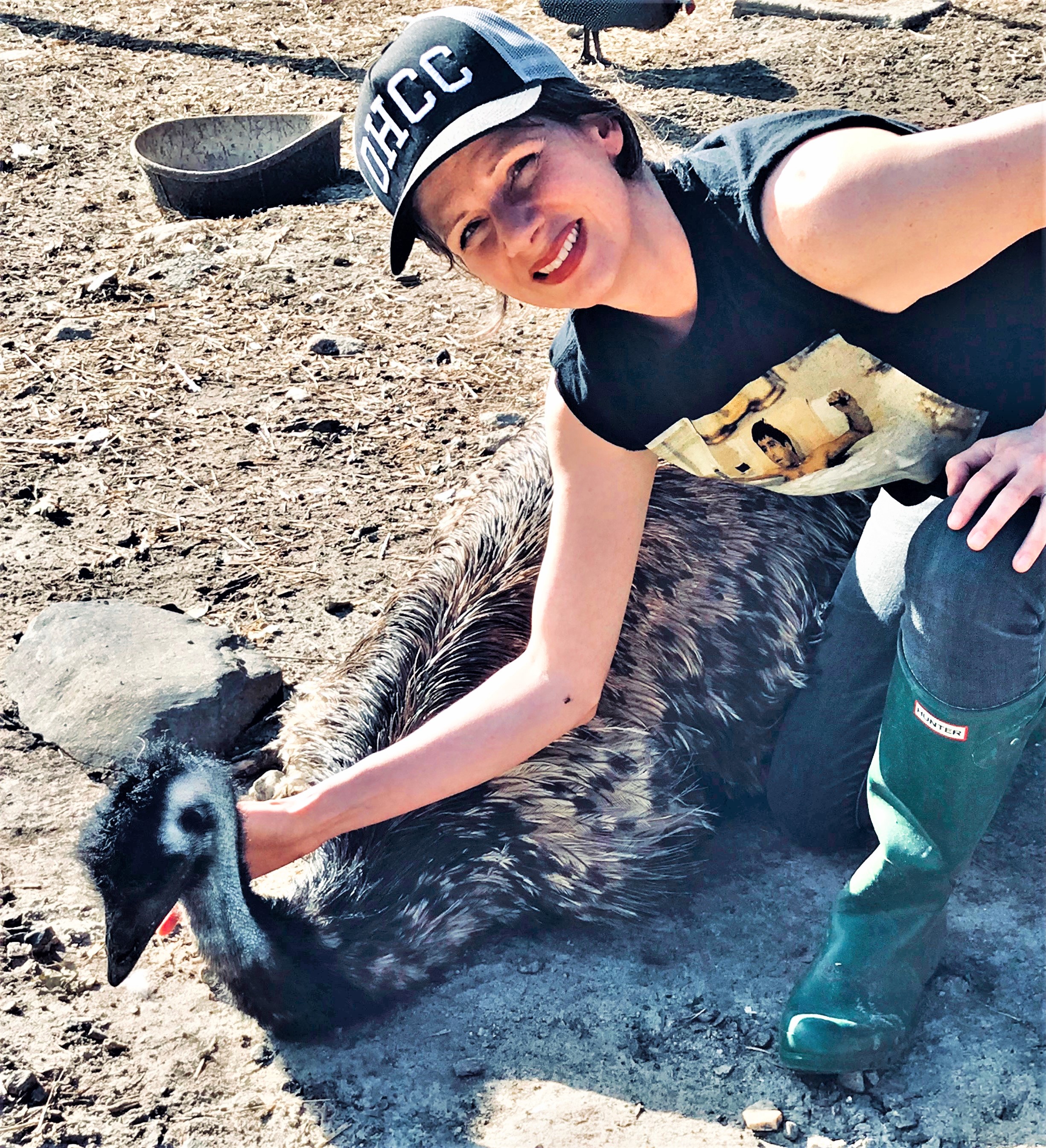
After Animal Nation helped her rescue a kidnapped fawn, Joyce M. began volunteering at the farm sanctuary, where she’s bonded with an emu named Didgeridoo. (Photo: Joyce M.)
Coyote Ugly?
Sharing DNA with dog and wolf, possessing sharp teeth and eerie howls, Eastern coyotes are the most controversial of suburban critters. After hunters decimated the wolf population out West, coyotes lost their main competition and expanded their range eastward, showing up in this region around World War II. Along the way, they mated with Canadian wolves to produce the larger Eastern version we see in Westchester.
You don’t have to binge-watch old Roadrunner cartoons to know how resilient Eastern coyotes are. As “opportunistic omnivores,” they’ll eat almost anything, from rotten fruit to small rodents to roadkill (particularly deer). This makes them “generalists,” meaning they can thrive pretty much anywhere.
A recent Pace University study of suburban coyotes from Rockefeller State Park Preserve found that these predators don’t eat pets and garbage so much as rodents and white-tailed deer. But when our beloved pets are attacked or don’t come home, things get emotional.
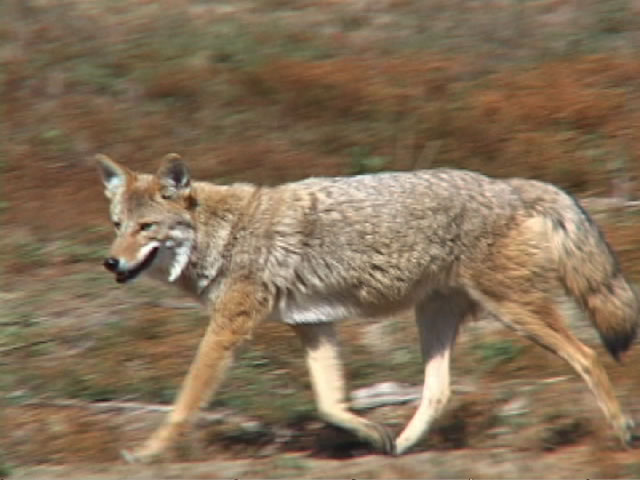
A coyote sighted in Westchester.
Consider what happened six years ago in New Castle. After reported coyote attacks on pet dogs, the town convened two fact-finding committees: one that was more eager to use trapping and one that was not. At a town meeting, the pro-trapping group presented “the coyote problem” as a threat to children, pets, and property values. Opposing camps sparred and swiped on Facebook. Major media outlets took notice.
“People come first,” one pro-trapping citizen told the Wall Street Journal. “Safety comes first.”
Finally, the town adopted a Coyote Response Plan that emphasized coexistence and disbanded both groups, but the coyotes stayed around. In 2016, a resident of Random Farms, an enclave of million-dollar contemporary homes on large, well-groomed lots, claimed a coyote attacked her dog. After more heated debate, the homeowners’ association received permits to hire federal trappers; over two years, several coyotes were caught in leg traps and euthanized.
The Rabies Factor
The mere word makes us cringe. Rabies is a fatal disease that is spread through the bite or saliva of infected animals. It has long been an issue in New York State, and 90 percent of rabies cases in the U.S. occur in wildlife. This is the opposite from times past when rabies was mostly in dogs and cats. (The disease came over in dogs from Europe in the 18th century.) But as mandatory rabies vaccinations reduced the problem in domestic pets, the disease jumped to undomesticated mammals. Raccoons, skunks, bats, and foxes are most likely to have rabies; however, dogs and cats are also at risk because they can easily contract rabies from wild or stray animals. (Word to the wise: Keep your pets up to date with their rabies vaccinations!)
Fortunately, rabies cases have dropped dramatically. According to the Westchester County Department of Health, of the 96 animals tested for rabies in the past year, five tested positive. New York State has logged 14 cases of rabies in humans since 1925, and two deaths, an 11-year-old girl in Sullivan County in 1993, and two years later, a 13-year-old Greenwich girl passed away at Westchester County Medical Center in Valhalla, the victim of a rabid bat. The Maria Fareri Children’s Hospital is named for her.
According to The Humane Society, “more people are killed by errant golf balls and champagne corks each year than are bitten by coyotes.” Let alone a rabid one — these maligned creatures aren’t even on the shortlist of rabies carriers. But in the spring of 2018, a highly unusual spate of attacks occurred in Westchester County by coyotes who later tested rabid, further damaging the species’ reputation. In March, two coyotes attacked six people in Yonkers and Hastings. During the ensuing police dragnet, a coyote jumped from the brush at Dunwoodie Golf Course and bit an officer, who shot it. The second coyote was still at large and presumed dead. Officials declared the “Westchester Coyote Nightmare” over.
It wasn’t.
Next week, in part two of our Special Report, hear from a Westchester police officer about his fight to the death with a wild animal, a local conservationist’s advice on how to peacefully coexist with our wild neighbors, and the tragic story of one that became a social media sensation.
Dana White is a freelance writer living in the village of Ossining, where she shares her yard with raccoons, skunks, squirrels, and an opossum that has snuck into the house twice.
We hope you’ve enjoyed today’s section of Examiner+. We love honest feedback. Tell us what you think: examinerplus@theexaminernews.com

Examiner Media – Keeping you informed with professionally-reported local news, features, and sports coverage.
